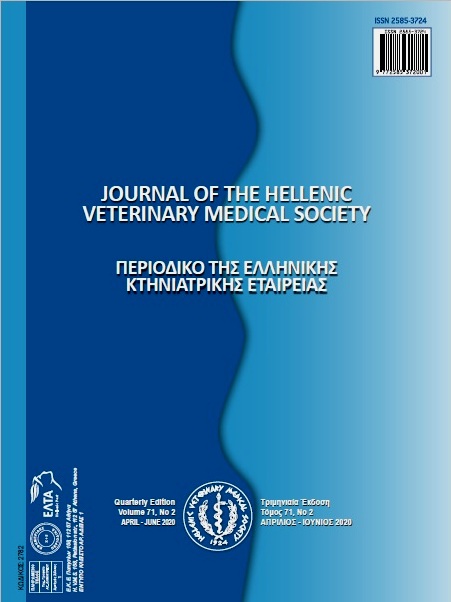HER-2 positivity rate in dogs with mammary carcinoma: a systematic review and meta-analysis
Abstract
Human epidermal growth factor receptor 2 (HER-2) plays an essential role in cell growth and survival. HER-2 overexpression occurs in 20-30% of human breast tumors and has prognostic value as it is associated with disease progression. HER-2 overexpression is also associated with tumor progression and metastasis in malignant mammary tumors of the canine. However, in the literature, different positivity classifications/scoring were used in the evaluation of HER-2 status, and there is no consensus in terms of scoring of HER-2 expression
in canine mammary tumors. In this study, it was aimed to estimate the HER-2 positivity rate by evaluating the results of the study using different positivity classifications by meta-analysis. In this context, by using ”HER-2 canine mammary tumor” keywords, Pubmed and Web of Science electronic databases were scanned until February 2019, and a total of 97 related studies were found. However, 20 of these studies were used for the analysis. Two different meta-analyses were performed to evaluate the HER-2 positivity status with “2+ and 3+” and “3+” scores. As a result, HER-2 positivity rates were determined at 25.87% and 25.99% for the studies using “2+ / 3+” scores and “3+” respectively for HER-2 positivity. Therefore, this result suggests that the rate of HER-2 positivity is similar between humans and dogs.
Article Details
- How to Cite
-
UZABACI, E., OZYIGIT, M., ERCAN, I., & ARDA, O. (2020). HER-2 positivity rate in dogs with mammary carcinoma: a systematic review and meta-analysis. Journal of the Hellenic Veterinary Medical Society, 71(2), 2141–2148. https://doi.org/10.12681/jhvms.23639
- Issue
- Vol. 71 No. 2 (2020)
- Section
- Research Articles

This work is licensed under a Creative Commons Attribution-NonCommercial 4.0 International License.
Authors who publish with this journal agree to the following terms:
· Authors retain copyright and grant the journal right of first publication with the work simultaneously licensed under a Creative Commons Attribution Non-Commercial License that allows others to share the work with an acknowledgement of the work's authorship and initial publication in this journal.
· Authors are able to enter into separate, additional contractual arrangements for the non-exclusive distribution of the journal's published version of the work (e.g. post it to an institutional repository or publish it in a book), with an acknowledgement of its initial publication in this journal.
· Authors are permitted and encouraged to post their work online (preferably in institutional repositories or on their website) prior to and during the submission process, as it can lead to productive exchanges, as well as earlier and greater citation of published work.




